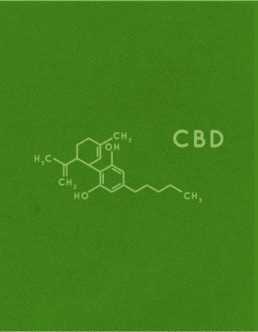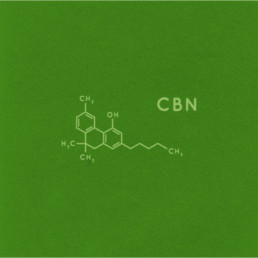Three Cannabinoids You Should Know (Other Than THC)
Cannabinoids other than THC have begun to emerge because of ongoing cannabis research. Here are three up-and-comers you should know.
It’s no secret the cannabis industry is in full bloom. With the rise in legalization, there has been a flourishing of knowledge surrounding cannabis. However, our understanding of the plant is still somewhat limited due to federal prohibition.
This hasn’t deterred the scientific community from conducting and documenting as much research as possible. If you’ve read our previous blogs, you may remember how cannabis cannabinoids have potential therapeutic benefits and can promote a healthier lifestyle and boost your athletic performance and recovery.
But first.
What are cannabinoids?
Simply put, cannabinoids are naturally occurring compounds found only in the cannabis plant. These compounds, when activated, bind to either the CB-1 (located in the brain and throughout the body) and CB-2 (primarily found in the immune system and gastrointestinal system) cannabinoid receptors located in the endocannabinoid system (ECS.)
In other words, cannabinoids interact with the human nervous system. This is why, depending on the cannabinoid, people can experience euphoric highs, or they can find relief to a wide array of symptoms, including pain, anxiety, nausea, and epilepsy.
The rockstar of the cannabinoid group is tetrahydrocannabinol (THC). Binding to the CB-1 receptors, THC is the psychoactive compound responsible for that intoxicating “high” so often associated with stoner culture and Seth Rogen comedies.
But THC is just one of MANY identified cannabinoids produced by the cannabis plant. While the exact number of cannabinoids has yet to be determined, we will take a look at three other cannabinoids gaining some recognition. Starting with:
Cannabidiol (CBD)
You’ve probably heard of cannabidiol (CBD) because it’s everywhere right now. Touted as the latest wellness craze, CBD has infiltrated everything from coffee shops to organic grocers to day spas. How is this possible?
Because CBD is pretty much the polar opposite of THC – it’s a safe, non-addictive, naturally occurring compound found in the cannabis plant. Because it is relatively non-psychoactive, you won’t be getting Cheech and Chong’d on it.
Instead, people have sought CBD for its wellness benefits. Because it closely binds to the CB-2 receptor (the immune system and gastrointestinal system receptor) in the ECS, it has been used to treat a wide range of afflictions, including (but not limited to) inflammation, anxiety, colitis, dementia, multiple sclerosis, arthritis, and epilepsy.
While there is plenty of anecdotal evidence of CBD’s potential health benefits, the FDA explicitly prohibits any companies from making any health claims about it. So long as companies comply and their hemp-extracted CBD does not contain more than 0.3 percent of THC, they can sell it legally.


Cannabinol (CBN)
Having mild to no psychoactive effects, the “sleeper” cannabinoid known as CBN could one day be as popular as CBD.
While there is still so much to learn about CBN, there is enough evidence to suggest it can act as an appetite stimulant as well as a natural analgesic. But perhaps what it is most famous for is helping people get some shut-eye. Hence the name “the sleeper cannabinoid.”
This is because CBN is basically a degraded version of THC. Cannabis contains a small fraction of the CBN cannabinoid, and when it is aged and exposed to oxygen, sun, or humidity, the THC will slowly transform into CBN. And with higher CBN comes a higher amount of sedating terpenes.
CBN has synergistic effects with other cannabinoids. Meaning it can enhance both THC and CBD. Studies show certain cannabinoids can interact with one another to produce the impact they could not achieve independently. It’s what’s known as the “entourage effect.”
Cannabigerol (CBG)
Another minor, non-psychotropic cannabinoid, CBG, is considered the “mother of all cannabinoids.” This is because other cannabinoids, like THC and CBD, start as the acidic form of CBG.
Research into lesser-known cannabinoids has been minimal, but CBG shows promise in slowing cancer cells’ spread, making it a potential cancer fighter. Some other disorders it can possibly relieve are glaucoma, Crohn’s, IBS, bacterial infections, and Huntington’s disease.
Unlike CBN, CBG is derived from young, fresh cannabis plants containing higher amounts of CBG. But because it is found in smaller quantities than other cannabinoids in the cannabis plant, CBG is incredibly rare and can be pretty pricey.

The future of cannabinoids
You might be burned out on acronyms – it’s understandable. Cannabis is incredibly complicated and full of nuances. With all the continuing studies and education, it’s only a matter of time before we uncover the full potential of each cannabinoid. Consider all the new information about THC and CBD we have today compared with ten years ago.
In the meantime, why not explore the benefits of cannabis for yourself? A great place to start would be with some of our delicious edibles at a High Notes location near you!
